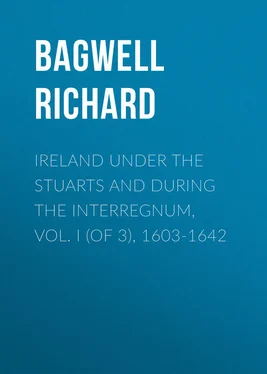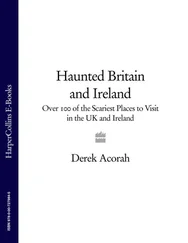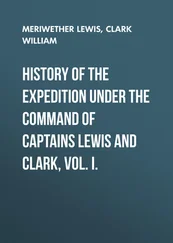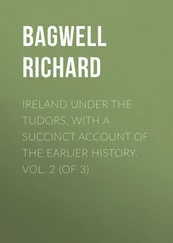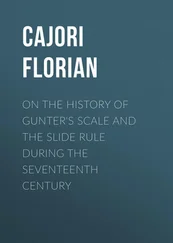Richard Bagwell - Ireland under the Stuarts and during the Interregnum, Vol. I (of 3), 1603-1642
Здесь есть возможность читать онлайн «Richard Bagwell - Ireland under the Stuarts and during the Interregnum, Vol. I (of 3), 1603-1642» — ознакомительный отрывок электронной книги совершенно бесплатно, а после прочтения отрывка купить полную версию. В некоторых случаях можно слушать аудио, скачать через торрент в формате fb2 и присутствует краткое содержание. Жанр: foreign_antique, foreign_prose, на английском языке. Описание произведения, (предисловие) а так же отзывы посетителей доступны на портале библиотеки ЛибКат.
- Название:Ireland under the Stuarts and during the Interregnum, Vol. I (of 3), 1603-1642
- Автор:
- Жанр:
- Год:неизвестен
- ISBN:нет данных
- Рейтинг книги:4 / 5. Голосов: 1
-
Избранное:Добавить в избранное
- Отзывы:
-
Ваша оценка:
- 80
- 1
- 2
- 3
- 4
- 5
Ireland under the Stuarts and during the Interregnum, Vol. I (of 3), 1603-1642: краткое содержание, описание и аннотация
Предлагаем к чтению аннотацию, описание, краткое содержание или предисловие (зависит от того, что написал сам автор книги «Ireland under the Stuarts and during the Interregnum, Vol. I (of 3), 1603-1642»). Если вы не нашли необходимую информацию о книге — напишите в комментариях, мы постараемся отыскать её.
Ireland under the Stuarts and during the Interregnum, Vol. I (of 3), 1603-1642 — читать онлайн ознакомительный отрывок
Ниже представлен текст книги, разбитый по страницам. Система сохранения места последней прочитанной страницы, позволяет с удобством читать онлайн бесплатно книгу «Ireland under the Stuarts and during the Interregnum, Vol. I (of 3), 1603-1642», без необходимости каждый раз заново искать на чём Вы остановились. Поставьте закладку, и сможете в любой момент перейти на страницу, на которой закончили чтение.
Интервал:
Закладка:
The abortive rebellion of O’Dogherty made the fate of the six Ulster counties harder than it might otherwise have been. It was, say the Four Masters, ‘from this rising and from the departure of the Earls that their principalities, their territories, their estates, their lands, their forts, their fruitful harbours, and their fishful bays were taken from the Irish of the province of Ulster, and were given in their presence to foreign tribes; and they were expelled and banished into other countries, where most of them died.’ Inishowen, which O’Dogherty held by patent independently of Tyrone, was separately forfeited, and the whole of it granted to Chichester himself. The failure of trial by Jury in Neill Garv’s case prevented Davies from running a fresh risk with O’Cahan, who lay long in Dublin Castle, and was sent to the Tower late in 1609 in charge of Francis Annesley, afterwards Lord Mountnorris. Neill Garv and his son Naughton went in the same vessel. ‘The boy,’ said Chichester, ‘has more wit than either of them,’ and he had been at Oxford and at Trinity College, Dublin. No charge was made against him, but he was as proud as his father. O’Cahan remained a prisoner, and no doubt there was plenty of evidence against him, but Chichester, while carrying out the policy of the Home Government, scarcely hides his opinion that he had been badly treated, and that he had the reputation of a truth-telling man. As to the facts, the Lord Deputy’s story tallies closely with that of Docwra. Writing as late as 1614, the latter says deliberately that ‘O’Cahan, from the breach of my promise with him, derives, as well he may, the cause of all his miseries,’ and he thought he would have done nothing rebellious if faith had been kept with him. He was never tried, and spent years in the Tower, where he probably died in 1628. A thousand acres of his old territory was granted, or perhaps only promised, to his wife Honora, with reversion to her son Donell, but the young man went to the Netherlands, returned in 1642 with Owen Roe O’Neill, and was killed at Clones. His elder brother Rory was hanged for his share in the conspiracy of 1615. 54 54 Docwra’s Narration , 283. Francis O’Cahan’s petition calendared with the papers of 1649, p. 278, but evidently of a much earlier date. Hill’s Ulster Plantation , 61, 235.
CHAPTER V
THE SETTLEMENT OF ULSTER
The tribal system known to the writers of what are called the Brehon laws survived much longer in Ulster than elsewhere. In the other three provinces the Anglo-Norman invaders may not have made a complete conquest, but they had military occupation and many of their leaders took the position of Irish chiefs when the weakening power of the Crown made it impossible to maintain themselves otherwise. Yet they never forgot their origin, and were ready enough to acquiesce when the Tudor sovereigns reasserted their authority. But there were no Butlers, Fitzgeralds, or Barries in Ulster, while the Burkes withdrew into Connaught and assumed Irish names. For a long time the native clans were left almost to their own devices. Con Bacagh O’Neill, when he accepted the earldom of Tyrone in 1543 and went to England to be invested, took a long step towards a new state of things. Through ignorance or inadvertence the remainder was given to Matthew Ferdoragh, who was perhaps not an O’Neill at all. Shane O’Neill, the eldest son of undoubted legitimacy, kept the leadership of his clan, while insisting in dealing with the government that he was Con’s lawful heir. Even Shane admitted that Queen Elizabeth was his sovereign. When the original limitation of the peerage took practical effect, and Hugh O’Neill became Earl of Tyrone, the feudal honour was most useful on one side while the tribal chiefry was still fully maintained on the other. In two cases, decided by the Irish judges in 1605 and 1608 respectively, gavelkind or inheritance by division among all males was abolished as to lands not forming part of the chief’s demesne, and Tanistry as to the land of the elective chief. This purely judge-made law was followed in the settlement of Ulster with far too little regard to the actual state of things there. 55 55 Le Case de Gavelkind , 3 Jac., and Le Case de Tanistry , 5 Jac., in Davies’ reports, 1628.
Without going into the technicalities of Celtic tenure it may be assumed for historical purposes that the Ulster Irish consisted of the free tribesmen who had a share in the ownership of the soil and the mixed multitude of broken men who were not only tolerated but welcomed by the great chiefs, but who were not joint proprietors though they might till the land of others. A large part of the inferior class consisted of the nomad herdsmen called creaghts , who were an abomination to the English. There was always much more land than could be cultivated in a civilised way, and the cattle wandered about, their drivers living in huts and sheds till the grass was eaten down, and, then removing to a similar shelter in another place. One main object was to turn these nomads into stationary husbandmen, and it was not at all easy to do. Still more troublesome were the ‘swordsmen’ – that is, the men of free blood whose business had always been fighting and who would never work. They formed the retinue of Tyrone and the rest, and when the chiefs were gone they had nothing to do but to plunder or to live at the expense of their more industrious but less noble neighbours. ‘Many natives,’ says Chichester, ‘have answered that it is hard for them to alter their cause of living by herds of cattle and creaghting; and as to building castles or strong bawns it is for them impossible. None of them (the Neales and such principal names excepted) affect above a ballybetoe, and most of them will be content with two or three balliboes; and for the others, he knows whole counties will not content the meanest of them, albeit they have but now their mantle and a sword.’ Some of these men owned land with or without such title as the law acknowledged. The radical mistake of the English lawyers was in ignoring the primary fact that land belonged to the tribe and not to the individual. It is true that the idea of private property was extending among the Irish, and that the hereditary principle tended to become stronger, but the state of affairs was at best transitional, and the decision in the case of gavelkind went far in advance of the custom. Yet it might possibly have been accepted if Chichester’s original idea had been followed. He wished first to distribute among the Irish as much land as they could cultivate, and to plant colonists on the remainder. What really happened was that everything was done to attract the undertakers, and as the rule of plantation allowed no Irish tenants to have leases under them the natives who remained were reduced to an altogether inferior position. The servitors were allowed to give leases to the Irish, whom they might keep in order by their reputation and by the possession of strong houses. But the amount of land assigned for this purpose was inadequate, and the Irish tenants, who for the most part were not given to regular agriculture, soon found themselves poor and without much hope of bettering their condition. Very light ploughs attached to the tails of ponies were not instruments by which the wilderness could be made to blossom like the rose. This system of ploughing certainly shows a low condition of agriculture, and it was general wherever estates were allotted to native gentlemen. ‘Tirlagh O’Neale,’ says Pynnar, ‘hath 4,000 acres in Tyrone. Upon this he hath made a piece of a bawn which is five feet high and hath been so a long time. He hath made no estates to his tenants, and all of them do plough after the Irish manner.’ Mulmory Oge O’Reilly had 3,000 acres in Cavan, lived in an old castle with a bawn of sods, and ‘hath made no estates to any of his tenants, and they do all plough by the tail.’ Brian Maguire, who had 2,500 acres in Fermanagh, lived in a good stone house and gave leases to some of his tenants, but even they held to the Irish manner of ploughing. A good many of the undertakers made no attempt to build, and of course the lands were in the occupation of Irishmen who were liable to be disturbed at any moment, and therefore very unlikely to improve. 56 56 A Ballyboe varied from sixty to 120 acres, and a Ballybetagh was about 1,000. An introduction to the very large and complicated question of Celtic tenures may be had through Maine’s Early History of Institutions and Joyce’s Social History of Ancient Ireland , 1903.
Интервал:
Закладка:
Похожие книги на «Ireland under the Stuarts and during the Interregnum, Vol. I (of 3), 1603-1642»
Представляем Вашему вниманию похожие книги на «Ireland under the Stuarts and during the Interregnum, Vol. I (of 3), 1603-1642» списком для выбора. Мы отобрали схожую по названию и смыслу литературу в надежде предоставить читателям больше вариантов отыскать новые, интересные, ещё непрочитанные произведения.
Обсуждение, отзывы о книге «Ireland under the Stuarts and during the Interregnum, Vol. I (of 3), 1603-1642» и просто собственные мнения читателей. Оставьте ваши комментарии, напишите, что Вы думаете о произведении, его смысле или главных героях. Укажите что конкретно понравилось, а что нет, и почему Вы так считаете.
